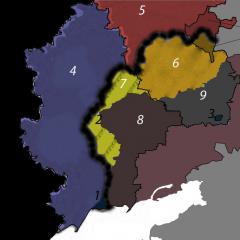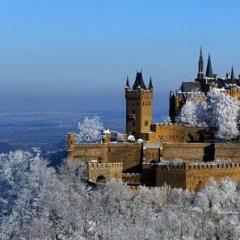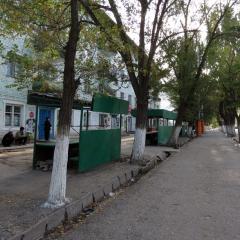The DPR and LPR are a huge territory of the RSFSR. Suputnikova map of Luhansk online Konturna map of Luhansk region
Just now, wandering around the world’s web, I suddenly stumbled upon the Wikipedia article “Donetsk Province.” A map of territorial changes of the 20s was reported before the statistics. And then I was reminded of the songs of the images - how often I study similar images the rest of the time. What are these contours? That's the same "contact line" with the ZSU!
I began to wonder how it happened, what a trick it was. It is useful to read in more detail and construct any diagram based on the above. The scheme is very clever and indestructible, and even the actions can be revealed.
Apparently, the cordon of the Katerynoslav Governorate and the Region of the Donetsk Region until 1914 passed through the Kalmius River, near the borders of Donetsk. The left bank part of Nishny Donetsk extended to the Donetsk Region, and the right bank to the Katerynoslav province.
There is another interesting historical fact. Quoted from Wikipedia: The village of Koshari (Antratsytivskyi district, Lugansk region) until 1920 was part of the warehouse of the Don region, when... it was transferred to the warehouse of the Ukrainian RSR. 1924 Rocky part of Donbas was turned to the Rrfsr I, I hopped all, the village of Koshari, the village of Koshari, the village of Dar'ano-Ramakivka turned to the Rrfsr warehouse, which became the tall of the Luganskiy district of Ukraine. In 1945, this enclave, which is part of the Krasnosulinsky warehouse in the Rostov region, was transferred to the URSR. As a result, control over this territory passes... to the Lugansk People's Republic.
Ozhe, diagram:

The diagram shows:
1
- territory of the city of Mariupol.
2
- territory of Donetsk city.
3
- enclave of the RRFSR in the middle of the URSR from 1924 to 1945.
4
- the lower territory of the Donetsk region, controlled by Ukraine.
5
- Lugansk region.
6
- large territory of the Lugansk region, which is under the control of the LPR, formerly part of the Katerinoslav province (Novorosiya).
7
- large territory of the Donetsk region, neither controlled by the DPR, but formerly part of the Katerinoslav province (Novorosiya).
8
- large territory of the Donetsk region, which is under the control of the DPR, formerly part of the Donetsk Region.
9
- large territory of the Luhansk region, which is under the control of the LPR, formerly a part of the Don region.
10
- the territory was transferred from the warehouse of the RRFSR to the warehouse of the URSR in 1920 and turned back in 1924. Includes the places of Taganrog and Shakhti with districts. Nina territory of the Rostov region.
11
- the territory of the Don region of the RRFSR, transferred to the warehouse of the URSR in 1920. Nina’s “real” part of this territory is controlled by Ukraine, and the “real” part of the LPR.
Black mark - line of stitching.
The diagram is based on a map from the website of the Ministry of Internal Affairs of Ukraine, scaledly superimposed on the diagram of the overlap of cordons from the Wikipedia article “Donetsk province”.
Tsikavy vysnovki can be earned from this. Nishnyh territories of the DPR and LPR in their warehouse will take revenge on large territories of the RRFSR and on the basis of the historical Novorossiya! It is also important to remember that the SRSR was officially established only in 1922, and in 1920, these localities also had Radian rule, otherwise... You can say politely that I want to explain the legality and logic of the transfer to Crimea URSR in 1954 was not here smell. Between right-handed and left-handed. However, there is a lot of special importance, even if there is only one country.
It seems to me that the rulers used a similar scheme in this apparent conflict. However, this scheme spontaneously gives the cells plenty of nutrition. Almost everything, when seen from a simple perspective, seems logical.
They changed Donetsk to Mariupol. No one is going to stop right now in this place. If you look at the map of the Katerynoslav province, you can see that Mariupol is actually located on the border. And the cordon passes Kalmius, which flows through the current Mariupol, as well as through Donetsk.
The territory of the Don region was divided completely.
Parts of the historical Novorossiya were lost to the offended republic. Zrobleno tse bulo, initially, not from the historical sponukan, prote.
It seems like it turned out that the DPR and LPR lost most of the valuable goods of the RRFSR.
Based on this scheme, Russia has the right to annex this territory, on the same basis as Crimea.
The axis is the same.
Suputnikova Lugansk map Allows you to ensure that the place is overflowing with the backsplash. Lugan and Vilkhivka. On the report map image you can clearly see all the streets, buildings, intersections, pedestals and monuments, rivers and parks. Website to show to the koristuvacham themselves Latest satellite images. So, just as a current photograph is distinguished by a high level of detail, all the details of the structure are clearly visible.
The cartographic picture can be modified by a number of display modes:
- schematic illustration;
- cartographic background with an accurate plan of automobile routes;
- “Satellite” is a relief depiction of locality.
What does the map of Lugansk from Saputnik 2016 look like?
By selecting panoramic mode, you can get realistic images of the whole place and surrounding areas. And all at once. A ruler has become a very handy tool for the painter; it can be used to adjust the distance between adjacent addresses and objects.
Trophy British tanks (from the period of the Gromadian War), the Avangard stadium, Peter and Paul and the Holy Ascension Cathedral are displayed on the map of Lugansk from the satellite. B St. Volodymyr's Cathedral, which is marked near the place from all sides, is not to be missed and the site is worth visiting, which can show the object on the map.
The satellite map of Lugansk allows you to locate between places and neighboring settlements. On the map of locality, it is clearly visible that the center is between Chervony Luch and Donetsk, Stakhanov and Severodonetsk.
Lugansk region is a region at the convergence of Ukraine. The map of the Lugansk region shows that the region borders the Ukrainian Kharkiv and Donetsk regions and the Russian Rostov, Bilgorod and Voronezh regions. The area of the region becomes 26517 km 2. The Siversky Donets River flows through the territory of the region.
Today the Lugansk region is divided into 18 districts. The warehouse region includes 37 towns, 109 settlements of the local type and 787 villages. The largest places in the region are Lugansk (center), Severodonetsk, Alchevsk, Krasny Luch, Sverdlovsk and Stakhanov.
The economy of the Lugansk region is based on the production of coal, metallurgy, chemical industry, machinery and agriculture. The region produces vugilla, vapnyak, kreida, pishchanik and natural gas.
Historical background
In 1938, the Voroshilovograd region was established on the territory of the current Lugansk region. From 1958 to 1970 the region was small and called Lugansk. Then from 1970 to 1990 the fates changed the name “Voroshilovogradska” again.

Must Visit
A detailed map of the Lugansk region presents a large number of natural monuments: the “Baransky Lobi” and Korolevsky rocks, the “Bokovo-Platove”, “Spivakivsky” and Lugansk nature reserves. It is recommended to visit the places of Lugansk, Severodonetsk and Sverdlovsk, the Trinity Church near Bilovodsk, the 18th century garden near the town of Oleksandrivsk, the religious monument “Kiselova Balka”, the park “Melovatsky Aquarius” and complex for the Derkul Kinnery near the village of Danylivtsi.
At the Lugansk Warto, take a look at the V.I. Museum. Next, visit the Peter and Paul Church, visit the local history museum and visit Marina Skela.
Note for tourists


